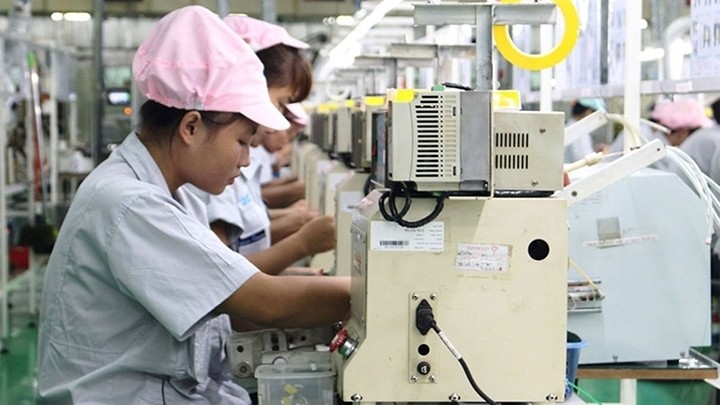A government report to the National Assembly earlier this week shows that the country is on track to meet, and even exceed, all 12 targets for 2018. Significant improvements have been made in all fields, from economics, culture, society and the environment to defence, security and external relations.
In the first nine months of the year, Vietnam’s economic growth reached 6.98% and the full-year growth figure is expected to surpass the National Assembly’s target of 6.7%. The consumer price index (CPI) for 2018 is expected to average at 4%, recording the third year in a row that inflation is curbed at below 4%. Foreign reserves hit a record of US$60 billion.
The economic structure has seen a positive shift with a dramatic reduction in the share of agriculture while the ratios of industrial production and services have exceeded the targets set for 2020. Manufacturing continues to be the main driver of growth.
Compared with 2016, the size of the Vietnamese economy has increased by 1.3 times to reach VND5.5 quadrillion (US$236.5 billion) by the end of the year, with GDP per capita up by US$440.
Thanks to such a performance, Vietnam’s stock market has been added to the watchlist for possible reclassification as a secondary emerging market by FTSE Russell. Many credit ratings agencies have also rated Vietnam as having a good outlook and one of the fastest-growing economies in the region and the world.
That Vietnam has maintained high economic growth with GDP surpassing the target for two years in a row is highly significant because 2018 is the key year of the 2016-2020 socio-economic development plan.
However, besides the positive results, weaknesses of the socio-economic picture should be candidly acknowledged so as not to be self-satisfied and continue striving to realise the set targets successfully with bold and synchronous measures, notably improving the business climate, enhancing the national competitiveness and bolstering economic growth.
Each ministry, agency and locality should have an action plan with specific targets, solutions and roadmaps aimed at improving Vietnam’s competitiveness.
The inflationary pressure remains strong towards the end of the year due to the impact of many factors, especially volatility in exchange rates and interest rates, rising global oil prices and the need to adjust the domestic prices of electricity, healthcare and education.
Therefore ministries, agencies and localities should take more aggressive measures, avoid the sentiment of satisfaction and closely watch market developments in order to promptly propose measures to control inflation and stabilise the macroeconomy.
















